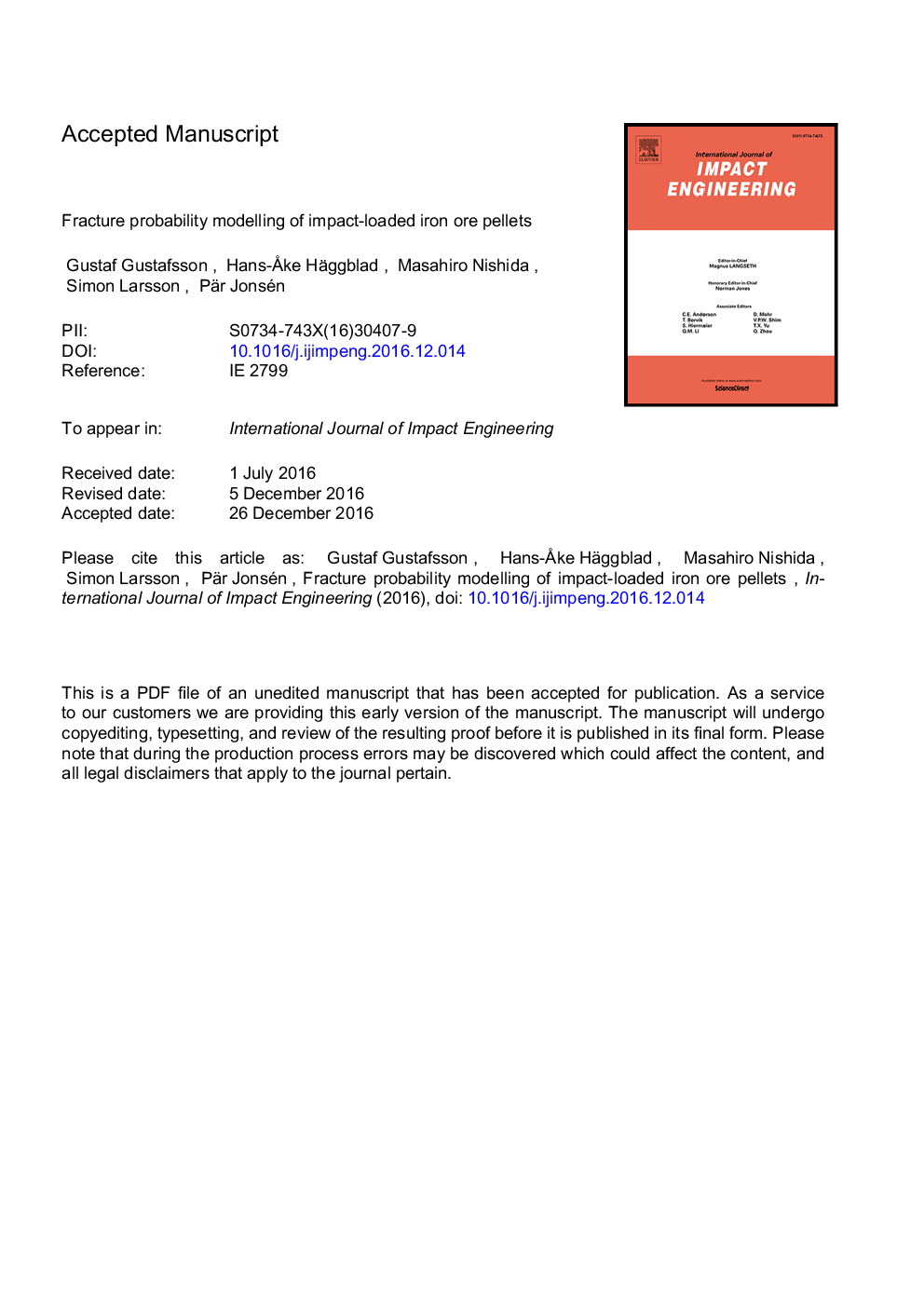| Article ID | Journal | Published Year | Pages | File Type |
|---|---|---|---|---|
| 5015624 | International Journal of Impact Engineering | 2017 | 28 Pages |
Abstract
Blast furnace iron ore pellets are sintered, centimetre-sized ore spheres with a high iron content. Together with carbonized coal, iron ore pellets are used in the production of steel. In transporting pellets from pelletizing plants to customers, iron ore pellets are exposed to different static and dynamic loading situations, resulting in strength degradation and, in some cases, fragmentation. This can lead to a reduced gas flow in the blast furnace, which causes reduced quality in steel production. Reliable numerical simulations that can predict the ability of the pellets to endure their handling are important tools for optimizing the design of equipment for iron ore handling. This paper describes the experimental and numerical work performed to investigate the impact fracture behaviour of iron ore pellets at different strain rates. A number of split Hopkinson pressure bar tests with different striker velocities are carried out and analysed to investigate the strain rate dependency of the fracture strength of iron ore pellets. Fracture data for iron ore pellets are derived and expressed in terms of statistical means and standard deviations. A stress based, strain-rate dependent fracture model that takes triaxiality into account is suggested. The fracture model is used and validated with impact tests of iron ore pellets. In the validation experiment, iron ore pellets are fired against a steel plate, and the percentage of fractured pellets at different impact velocities are measured. Finite element simulations of the experiment are carried out and the probability of pellets fracturing during impact are calculated and compared with the experimental results. The agreement between the experiments and numerical simulations shows the validity of the model.
Keywords
Related Topics
Physical Sciences and Engineering
Engineering
Mechanical Engineering
Authors
Gustaf Gustafsson, Hans-Ã
ke Häggblad, Masahiro Nishida, Simon Larsson, Pär Jonsén,
